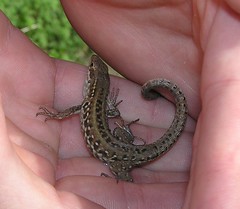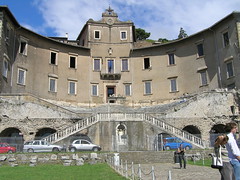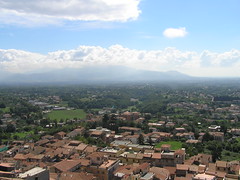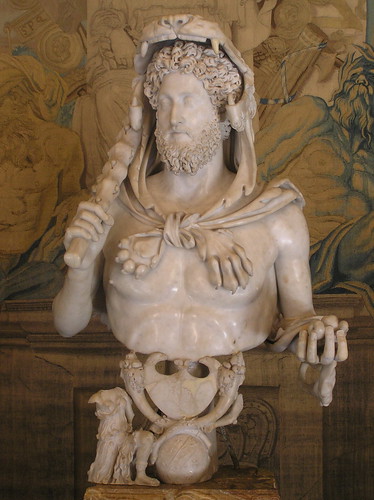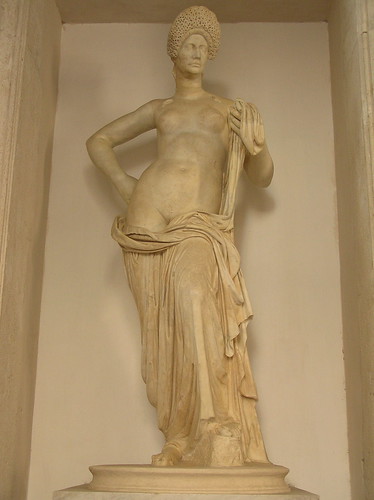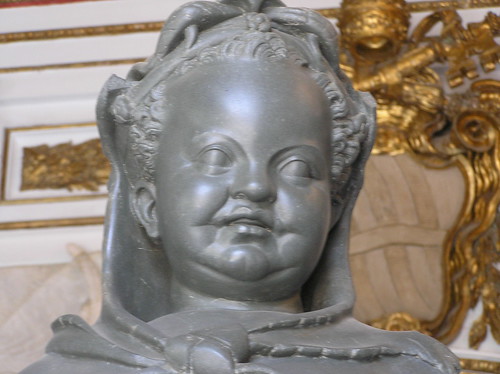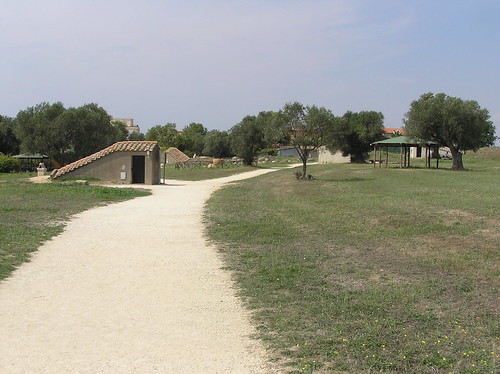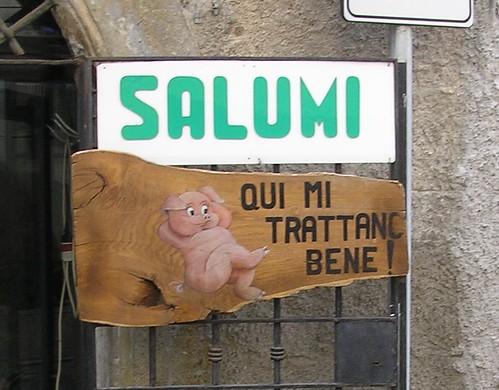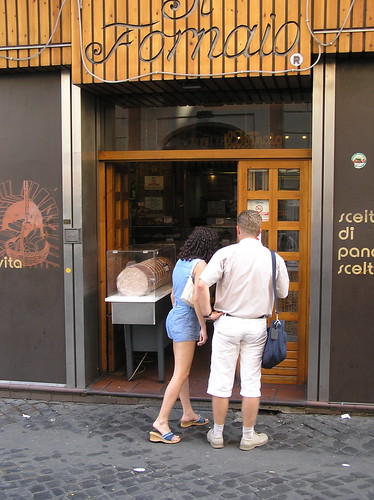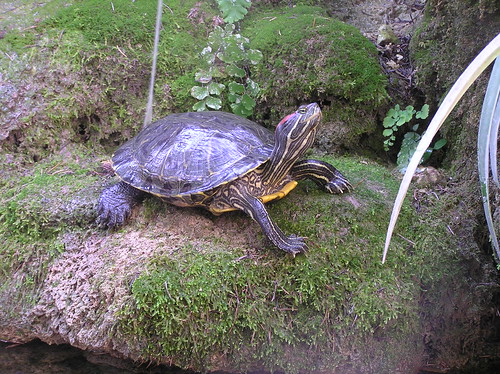gone fishin'
I haven't written about food for a while, so here's a write-up on a big ol' dinner we enjoyed a couple of weeks ago, at Da Franco Ar Vicoletto. This is a fish restaurant, in the San Lorenzo neighborhood on the east side of town, behind Termini. San Lorenzo gets its name from the church of San Lorenzo fuori le Mura, one of the seven pilgrimage churches in the city, but at this point it's dominated by the gigantic University of Rome. The neighborhood is one of the hippest in the city, with lots of energy and lots of young people. It's not one that I've spent a lot of time in, but there's plenty of interesting stuff there to explore.
Da Franco is on the small via dei Falisci (a street named after one of the ancient tribes from Latium. All the nearby streets have names like this: there's the Via dei Marsi, via dei Volsci, and so on). When I say it's on the street, I mean it's on the street: the restaurant occupies two storefronts on either side of the street, which they pretty much fill with tables. The tables, in turn, are completely filled by eight o'clock or so, and as I don't think they take reservations, it's worth it to show up early to avoid a wait.
The food is defiantly old-school and defiantly affordable. There's a menu with various dishes of pasta, et cetera, but it's to be avoided: instead, head directly for the prix fixe. For a measly 25 euros, you get a massive feast of six courses of fish, plus water, plus wine, plus a nice lemon gelato for dessert: enough for a ship of pirates (and their booty). Friends who have been there repeatedly say that the dishes basically don't change: you'll get the same things whenever you're there. Which is fine, because it's terrifically good.
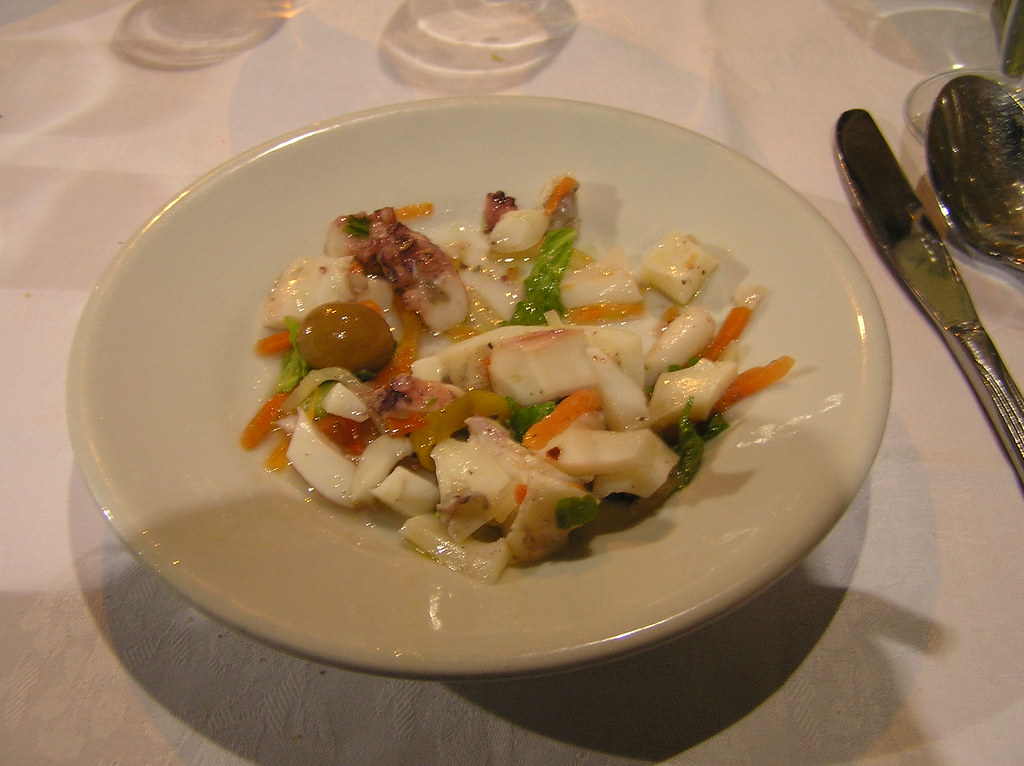
We started off with a salad of marinated octopus, carrots, celery and olives. It's a shame that the picture is blurry (at this point in the evening, I was trying to get away without using the flash: fool!) because it's a really lovely dish, with lots of colors. The octopus was shockingly tender; marinated like this is a good way to go, I think. Oh, and it answers the question I had at Antico Arco: the octocylinders are indeed tentacles, not some sort of weird octoanatomy that had me so octoconfused. (Hooray for research!)

Next, a plate of some of the best mussels I've ever had. Nothing fancy: just steamed with white wine, garlic and parsley, but they were tender and juicy and perfect with a squeeze of lemon. I've had problems with mussels in the past-- after a bout of food poisoning, I couldn't eat them for a few years-- but these definitely got me back on the ol' horse.
This was followed by a dish of deep-fried sardines and shrimp. Basic stuff, but again, very simply and very well prepared. You can debone the sardines, or be like me and count on them to provide some calcium in your diet.
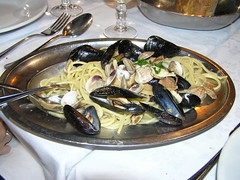
And then, spaghetti with shellfish. Here the mussel makes a triumphant reappearance, flanked by its fearless allies, the clam and the tiny clam. I can't remember the name for the little clams: vongolini? Something like that; anyway, I've never seen them in the US, and only sometimes seen them in Italy, but they're terrific: each one has just a tiny dot of meat, packed with intense flavor. And they're just so cute and widdle, like teeny tiny babies: the veal of the shellfish world, raised in miniature underwater cages...
The next two courses brought us into the world of the secondo. These were a little controversial (well, "controversial" in a very very limited way, as in "our table was in disagreement", not "afterwards we all wrote letters to our senators and Amnesty International.") We started with a sort of bean, pasta and shellfish porridge. (sorry, no photo.) I couldn't exactly figure out what was supposed to be going on with it: it reminded me vaguely of Manhattan clam chowder, only beanier. Not terrible, and certainly worth trying, but not wonderful, either.

After that, a seafood lasagna, again with shellfish. Our table was split on this one. Either you buy into the cheesy oozing seafoody goodness or you think that putting fish into cheesy oozing lasagna is kind of gross. I know which side I take in that epic debate, but I'm not telling. (So there.)
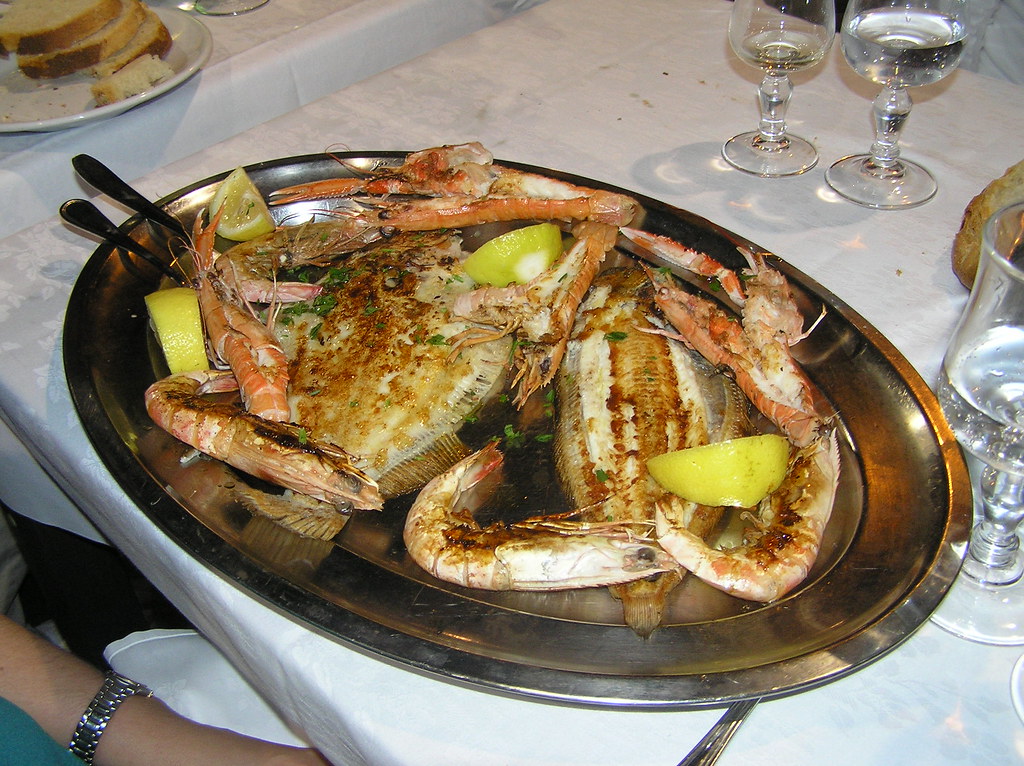
One more course, of pan-fried seafood. There are a couple of fish in there, surrounded by those crawdad-like crustacean-y critters you see in Italy but that I've never seen in the US. Their claws look too fearsome for them to be prawns, and they're too long and skinny for them to be crayfish, so I don't know exactly what they are. But they're awfully tasty once you've scooped the meat out of their tails. The fish, too, hit the spot; another basic, tasty dish.
Some lemon gelato finished dinner up, as we sat and enjoyed the last of the wine (a pretty decent Castelli Romani), and then stumbled off to find a cab home. Good stuff all around.
(Speaking of gone fishin', I'll be leaving in a day or two for Sicily, and then for Croatia, so no blogging for a couple of weeks. Just an explanation, in case you'll, y'know, miss me. (Sniff.)
Da Franco is on the small via dei Falisci (a street named after one of the ancient tribes from Latium. All the nearby streets have names like this: there's the Via dei Marsi, via dei Volsci, and so on). When I say it's on the street, I mean it's on the street: the restaurant occupies two storefronts on either side of the street, which they pretty much fill with tables. The tables, in turn, are completely filled by eight o'clock or so, and as I don't think they take reservations, it's worth it to show up early to avoid a wait.
The food is defiantly old-school and defiantly affordable. There's a menu with various dishes of pasta, et cetera, but it's to be avoided: instead, head directly for the prix fixe. For a measly 25 euros, you get a massive feast of six courses of fish, plus water, plus wine, plus a nice lemon gelato for dessert: enough for a ship of pirates (and their booty). Friends who have been there repeatedly say that the dishes basically don't change: you'll get the same things whenever you're there. Which is fine, because it's terrifically good.

We started off with a salad of marinated octopus, carrots, celery and olives. It's a shame that the picture is blurry (at this point in the evening, I was trying to get away without using the flash: fool!) because it's a really lovely dish, with lots of colors. The octopus was shockingly tender; marinated like this is a good way to go, I think. Oh, and it answers the question I had at Antico Arco: the octocylinders are indeed tentacles, not some sort of weird octoanatomy that had me so octoconfused. (Hooray for research!)

Next, a plate of some of the best mussels I've ever had. Nothing fancy: just steamed with white wine, garlic and parsley, but they were tender and juicy and perfect with a squeeze of lemon. I've had problems with mussels in the past-- after a bout of food poisoning, I couldn't eat them for a few years-- but these definitely got me back on the ol' horse.
This was followed by a dish of deep-fried sardines and shrimp. Basic stuff, but again, very simply and very well prepared. You can debone the sardines, or be like me and count on them to provide some calcium in your diet.

And then, spaghetti with shellfish. Here the mussel makes a triumphant reappearance, flanked by its fearless allies, the clam and the tiny clam. I can't remember the name for the little clams: vongolini? Something like that; anyway, I've never seen them in the US, and only sometimes seen them in Italy, but they're terrific: each one has just a tiny dot of meat, packed with intense flavor. And they're just so cute and widdle, like teeny tiny babies: the veal of the shellfish world, raised in miniature underwater cages...
The next two courses brought us into the world of the secondo. These were a little controversial (well, "controversial" in a very very limited way, as in "our table was in disagreement", not "afterwards we all wrote letters to our senators and Amnesty International.") We started with a sort of bean, pasta and shellfish porridge. (sorry, no photo.) I couldn't exactly figure out what was supposed to be going on with it: it reminded me vaguely of Manhattan clam chowder, only beanier. Not terrible, and certainly worth trying, but not wonderful, either.

After that, a seafood lasagna, again with shellfish. Our table was split on this one. Either you buy into the cheesy oozing seafoody goodness or you think that putting fish into cheesy oozing lasagna is kind of gross. I know which side I take in that epic debate, but I'm not telling. (So there.)

One more course, of pan-fried seafood. There are a couple of fish in there, surrounded by those crawdad-like crustacean-y critters you see in Italy but that I've never seen in the US. Their claws look too fearsome for them to be prawns, and they're too long and skinny for them to be crayfish, so I don't know exactly what they are. But they're awfully tasty once you've scooped the meat out of their tails. The fish, too, hit the spot; another basic, tasty dish.
Some lemon gelato finished dinner up, as we sat and enjoyed the last of the wine (a pretty decent Castelli Romani), and then stumbled off to find a cab home. Good stuff all around.
(Speaking of gone fishin', I'll be leaving in a day or two for Sicily, and then for Croatia, so no blogging for a couple of weeks. Just an explanation, in case you'll, y'know, miss me. (Sniff.)
